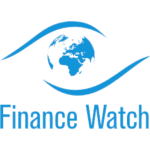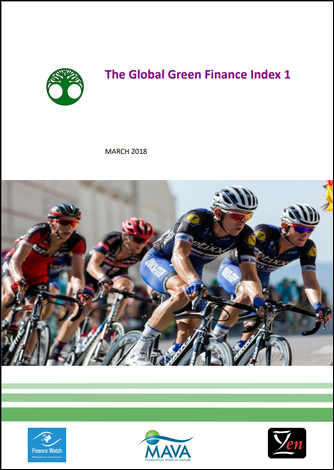Authors
Greg Ford, Mireille Martini, Simon Mills, and Mike Wardle
Sponsored by
- MAVA
Published by
Z/Yen Group & Finance Watch (March 2018), 54 pages.
Share on social media:



You might also be interested in:
The Global Green Finance Index 1
Welcome to the inaugural Global Green Finance Index, the first edition in a series which will chart the progress of the world’s financial centres towards a financial system that delivers sustainable development, and values people and the planet as much as profit. This gazette highlights some of the headline findings of our research. The GGFI seeks to measure perceptions of the quality and depth of green financial products across the world’s financial centres.
For the purposes of the GGFI, Green Finance refers to any financial instrument or financial services activity – including insurance, equity, bonds, commodity and derivatives trading, analytical or risk management tools – which results in positive change for the environment and society over the long term (sustainability).
Measuring the progress of green finance in the world’s financial centres presents a significant challenge, and is currently the subject of a number of international research programmes including:
- UNEP FI’s Positive Impact Initiative;
- UNEP’s Financial Centres For Sustainability Initiative;
- Climate KIC, I4CE and PwC’s Benchmark; and
- UN PRI’s Sustainable Stock Exchanges Initiative.
The GGFI is intended to complement these by using advanced statistical techniques to bridge the gaps in existing data by combining quantitative factors with the perceptions of financial services professionals and other experts.
Survey data for the GGFI is gathered on a continual basis and the intention is to publish updates twice a year. The index will therefore be sensitive to real -time changes in the international policy environment and developments in financial services markets.
The GGFI, in combination with the other measurement initiatives listed above will allow the identification of trends, and potentially enable policy makers to track the impacts of their decisions and identify and fill data gaps




